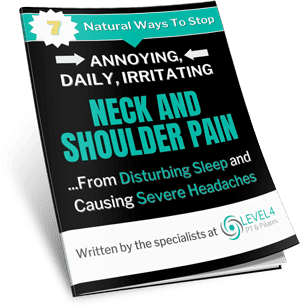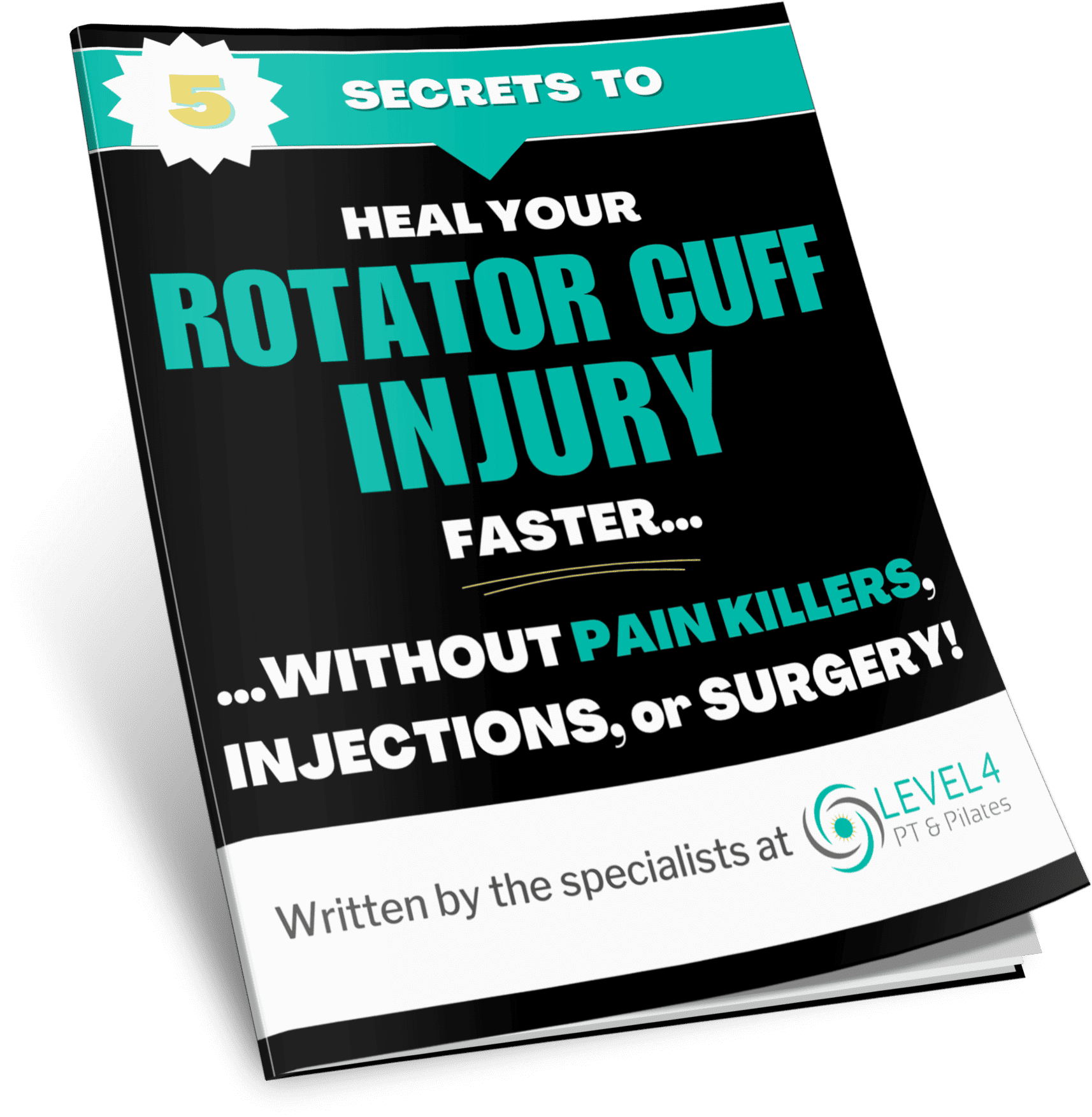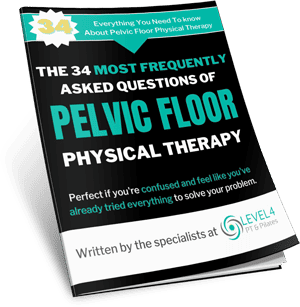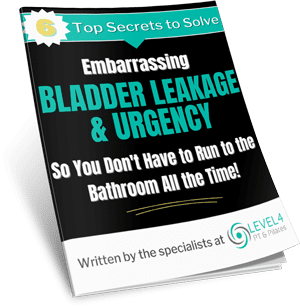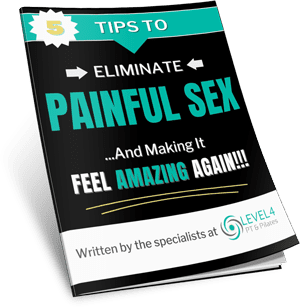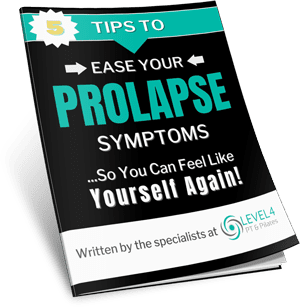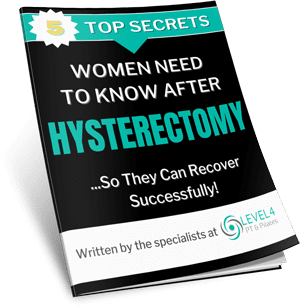This week I wanted to answer a common question we get asked quite regularly by our clients at LEVEL4 PT & Pilates:
“Dr. Andalon… my name is Casey, I’m 41 and I was recently diagnosed by my primary doctor with having L4-L5 and L5-S1 bulging discs following an MRI scan. I’ve now suffered with chronic back pain, stiffness and at times severely painful sciatica symptom for up to 9 months now.
At first the bulging disc symptoms were very mild. Now have gradually become more painful to the point that it is interfering with my life.
I’ve seen numerous of physicians, chiropractors, acupuncturists and massage therapists with no relief. I feel the problem just continues to get worse! My doctor referred me to a spine surgeon who of course, recommends surgery since nothing else has worked.
Do you have any advice for someone like me? Is there specific bulging disc exercise I can perform?
I’m just incredibly stiff when I wake up on a morning, I’m having difficulty sitting at work and I feel it throughout the day which means I can’t do things as easily as I’d like. Any advice?”
Bulging Disc
If you sound like Casey, the great news is that I’ve got plenty of tips and advice to help reduce bulging disc symptoms and improve your life.
But first, other common complaints we hear in the clinic from our clients who have been diagnosed with a bulging disc are with activities such as:
- Bending forward or backward
- Sitting
- Twisting
- Lifting
- Carrying
- Exercising / Sporting Activities (lifting weights, weightlifting, etc.)
- Going from sitting to standing
- Sleeping
Specific Lumbar bulging discs can also result in weakness, numbness, and tingling in the legs, as well as muscle spasms.
Bulging disc symptoms can worsen with coughing, sneezing, and bending.
When a lumbar bulging disc exerts pressure on the sciatic nerve, the resulting symptoms are commonly referred to as sciatica.
Common Lumbar Herniated Disc Symptoms
Do any of these symptom patterns sound familiar?
If it does, you’ve probably wondered what exactly is causing you to have this pain or symptoms which are interfering with your life?
If you’re like most people, you’ve probably already searched the internet attempting to find the best disc bulge treatments or disc bulge exercises to help solve your problem.
During your search, you will come across many potential treatments.
You will read about disc bulge treatments like:
- Microdiscectomy
- Disc replacement
- Spinal fusion
- Laminectomy
- Avoid lifting
- Weight loss
- Ice packs / Hot packs
- Electrical stimulation
- Back braces
- Pain medications and creams
- General bulging disc exercises
- Specific core exercises
- Acupuncture
- General stretches
- Epidural steroid (cortisone) injections
- Chiropractic
- Physical Therapy
And on, and on, and on….
Because there are so many different disc bulge treatment options how can you possibly know what is the best route to take for your specific problem?
At LEVEL4 we understand how frustrating and often how scary of a journey it can be when the doctor says you have bulging discs in your spine.
They point out the abnormal bulges on your MRI scan like it is as simple as pointing out a nail in your tire.
We hear all the time in our physical therapy clinic how our clients go to their Doctors...
And the Doctors tell them things like “it’s just your age” or simply “rest”, “try these painkillers” and “see how it goes”.
But this is rarely ever the BEST advice and often weeks later you end up going back to the Doctor again because it hasn’t gotten any better.
Worse, you’re often given yet another prescription of even stronger painkillers and advised to rest some more.
Does this sound familiar to you?
When that doesn’t work, you then frantically search for a resolution on your own (i.e. YouTube, Google).
You probably ask friends, coworkers, or family members if they have had similar experiences and what they did about it.
And when their advice fails, you then decide to try other things.
These can include epidural injections, chiropractor adjustments, acupuncture, and massages, to name a few.
They also promised you that relief you are so desperately looking for.
When they too fail to deliver the results you were promised, you quickly realize it was only a false sense of hope.
You feel like you have nowhere else to turn and you just have to deal with it for the rest of your life.
But it doesn’t end there.
After weeks and even months have gone by, nothing has helped, you return to your primary doctor (for at least the 3rd or 6th time) and you potentially hear the dreaded words “I’m going to refer you to the spine specialists” (A.K.A. the dreaded spine surgeon).
Has this type of thing happened to you?
This is insanity at its best.
It clearly explains why so many people aged 40+ are suffering from chronic low back pain.
This is a major contributor to the current opioid epidemic in this country.
About 1 in 5 people who see a doctor for chronic pain get an opioid prescription.
Why else does back pain last longer than it should?
Well, it’s easy to get confused because you’ve been told different things by different people.
There are lots of people out there who are happy to dispense advice - but not all of it is credible (including medical practitioners).
TIP: “Trust people's intentions, but don’t trust their judgment.”
Maybe you think your back pain was caused by doing something.
Perhaps lifting or sleeping awkwardly.
Really it was caused by years and years of poor posture that caused the muscles in your lower back to become weak and the repetitive lifting or the awkward sleeping position was just the EFFECT of that.
If you don’t know what you’re doing - back pain can be very confusing.
Thus, many people just end up accepting it as ‘part of life’ - as if it’s normal, and ‘just the way it is’.
Click Here If You Want More Information About How Physical Therapy Can Help You
Do you feel that way too?
Understanding and treating L4-L5 and L5-S1 disc bulges in your spine when you first begin to feel pain can prevent costly medical treatments and prevent surgery.
It is important to understand why your lower back hurts.
Or why you are experiencing the current symptoms (i.e. numbness, tingling, ache, stiffness, pain, sciatica, muscle weakness, etc.).
There is so much advice on the internet and with people's ill-advised.
This makes it so much more confusing as to what to do for your specific bulging disc problem.
Which is why most people end up doing the wrong thing and end up having spine surgery without ever getting to the root cause…
With potentially being a victim again and having multiple surgeries in the long-term.
This far to common mistake causes many to gradually lose their mobility and independence as time goes on.
FACT: A recent study demonstrated that early surgery in patients with 6–12 weeks of radicular pain leads to faster pain relief when compared with prolonged conservative treatment, but there were no differences after 1 and 2 years. Read the research article here.
Here’s why:
The first thing you need to do is find the exact cause for your disc bulges which have now caused you lower back or sciatica pain.
Finding the source and the cause of your pain will help you be able to treat it and prevent further damage and causing lifelong pain.
Will it go away by itself?
Contrary to popular thinking, it won’t go away on its own.
You might have days where you wake up feeling good with only minor disc bulge symptoms either in your low back, leg, buttock, calf, or foot…
And then by the time you commute to work and sit at your desk you feel it somewhat irritated, but don’t need painkillers just yet.
By mid-morning or halfway through the day you start to feel some serious pain.
And like routine, you take your painkillers in preparation for the severe pain. (I’m guessing you know what the pain is like).
But by the end of the day even after the second dose of painkillers, you’re in horrible pain again, dreading the endless drive back home.
In reality, you can’t wait to get home to cry in the corner.
Sound familiar?
Again, a common mistake you don’t want to do as many others with bulging disc symptoms do.
They don’t address the root of the problem… especially if you don’t know what’s really going on.
FACT: It will never completely go away unless you change something.
What do you need to do?
If you’re currently living with back pain, know that there is hope for you.
Here are 6 tips you can do today to help ease disc bulge symptoms to stop taking painkillers and avoid considering risky surgery:
- Stretch – every day! Stretching the muscles loosens the joints up and increases the space for your nerves to stop being irritated and fire more efficiently. It is important to note, that you shouldn't stretch through pain though. Ten minutes in the morning when you first wake up, and ten minutes before going to bed. Doing gentle stretches just before bed can help you get a much better night’s sleep as well. No equipment needed, just you and the comfort of your own home.
If you are someone who needs more guidance and accountability, try attending a Yoga class consistently.
Find an instructor who specializes and understands how to best implement disc bulge exercises and stretches to help reduce disc bulge symptoms while guiding you as you progress.
- Improve Your Posture – After stretching, you then have to appropriately strengthen the core muscles surrounding your back and hips with specific disc bulge exercises. This includes the glute muscles to help support your back and improve your posture when you sit and stand.
A poor static posture, whether in sitting or standing, further adds pressure and increases your bulging disc symptoms.
A slouching posture also turns off your vital core muscles.
This makes it harder for you to keep a proper sitting and standing posture. Thankfully, posture is the one that you can improve the most.
Pilates is by far the BEST of all the bulging disc exercises you can perform to help you improve your posture.
A great Pilates program will also help you gain core strength, flexibility, and spine stability endurance while sitting at your desk or throughout the day.
Click the link to read a previous blog I wrote about “The 7 Best Core Exercises (You’re NOT Doing)”
- Walk – for at least ten minutes a day (even better, twenty if you can). Next time you need to make a long phone call, do it on your mobile while walking.
- Avoid long periods of sitting – you’re better off laying stretched out on the sofa than you are sitting in a chair for long periods. We’re NOT designed to sit, and stretching out can be a nice relief for muscles and joints, especially if you’ve had a long day at work sitting in a chair.
Click the link to another previous blog I wrote to find out “How Sitting is Taking Years Off Your Life”.
- Take a warm bath – with Epsom salts. The heat and combination of Epsom salt or will ease your muscles almost immediately and will calm your mind. The perfect way to end your day and unwind before getting a good night’s sleep.
- Drink plenty of water - Seventy percent of your muscles are water. So, it makes sense that you need to drink plenty of water to support your body and keep it hydrated. Make sure you have a water bottle by your desk at work-ready. As a reminder, drink water throughout the day. Shoot for the required amount of eight (8) twelve (12) ounces glasses of water a day.
So, there you have it.
Appropriate stretching combined with specific bulging disc exercises and daily routines which will improve your overall flexibility, strength, and posture.
In turn, this can help stop frustrating, daily, irritating bulging disc symptoms.
In addition, it can also reduce how painful it feels and how much it gets in the way of your daily life.
Let me tell you why – Physical Therapy can help reduce your bulging disc recovery time.
If you’ve been struggling with any type of back pain or bulging disc symptoms for more than 9 days, it’s very likely you’ll run into the same problems Casey encountered.
Lucky for you, we’re here to help!
If you’d like to know more quick and easy tips for easing your symptoms, here’s a free guide.
It has 9 top tips to keep active with less back pain and bulging disc symptoms.
Learn how physical therapy can help your back pain and your disc bulge recovery by clicking the link: Back Pain.
Or if you would like to know how Virtual Physical Therapy can help you, request a copy of this free guide:
I hope this article is able to help you make a better decision for your health.
If you know of someone who would benefit from reading this (or needs to read it), feel free to share it with them.
Enjoy!
Dedicated to Restoring Your Health,
Dr. Dawn Andalon, PT, DPT, MTC, CPI
San Diego’s Leading Back Pain Specialist at LEVEL4 PT & Pilates
Health Disclaimer
By reading this publication, you agree that following any advice herein is for educational purposes and, if performed, are at your own risk. You agree to hold harmless Andalon Physical Therapy, Inc., its owners, and its employees. We are able to offer you this service at a standard charge. Significant injury risk is possible if you do not follow due diligence and seek suitable professional advice about your injury. Not guarantees of specific results are expressly made or implied in this blog/report.
- Can Physical Therapy Help My Muscles After Having Covid? - January 26, 2022
- The Real Story Behind What’s Causing Your Sciatica - August 30, 2021
- Should I Have Surgery to Repair a Tear in My Rotator Cuff? - February 9, 2021








